From eclectic wineries to a sprawling safari: Five unexpected reasons to visit Adelaide
Sign up now: Get ST's newsletters delivered to your inbox

A 45-minute drive from Adelaide, d'Arenberg is not just a typical winery, but doubles as a surrealist playground with a building shaped like a Rubik's Cube.
PHOTO: D'ARENBERG
Follow topic:
ADELAIDE – When I mention that I will be visiting Adelaide, puzzled friends ask: What is there to do?
A few helpfully suggest: Why not fly to Melbourne or Sydney instead?
Even a Singaporean friend who has been based in Melbourne for 10 years had never taken the 80-minute flight north-west to Adelaide. That is, until I invite her to join me for a leg of my journey to discover the capital city of South Australia.
After 10 days in Adelaide, it is my turn to be puzzled as to why Singaporean travellers skip over the city when planning their Australian holidays. Perhaps people underestimate its size – the city can be traversed in 20 minutes by car from the city centre.
But its compact nature and laid-back vibe will appeal to the slow traveller seeking reprieve from packed holidays.
The city is flanked by the lush Adelaide Hills and a 28km stretch of coastline and beaches, along which I spot fields of green and children diving into turquoise waters. I dine on excellent wine-paired degustation menus designed around local produce, in restaurants which also serve seafood caught from adjacent waters.
Culture lovers have lots to explore in what has been dubbed as the country’s festival capital. This is, after all, Australia’s first and only Unesco City of Music – where pop star Sia launched her career and rock band AC/DC’s lead vocalist Bon Scott found fame.
People in Singapore will soon find it easier to explore this quietly cool capital.
From October, Singapore Airlines will increase non-stop flights to Adelaide from seven to 10 a week. Round-trip flights start at $780, based on checks by The Straits Times in March.
At the end of her trip, my Melbourne-based friend praises the city for its charm as a slower, more intentional city, and promises to return. She writes on her Instagram page, and I concur: “Adelaide, you underrated gem. I need to have a word with everyone who told me you would be a bore.”
A week in Adelaide promises a slate of novel, leisurely experiences that tell a different Australian story. Here are five unique experiences to expect.
1. Tour eclectic wineries
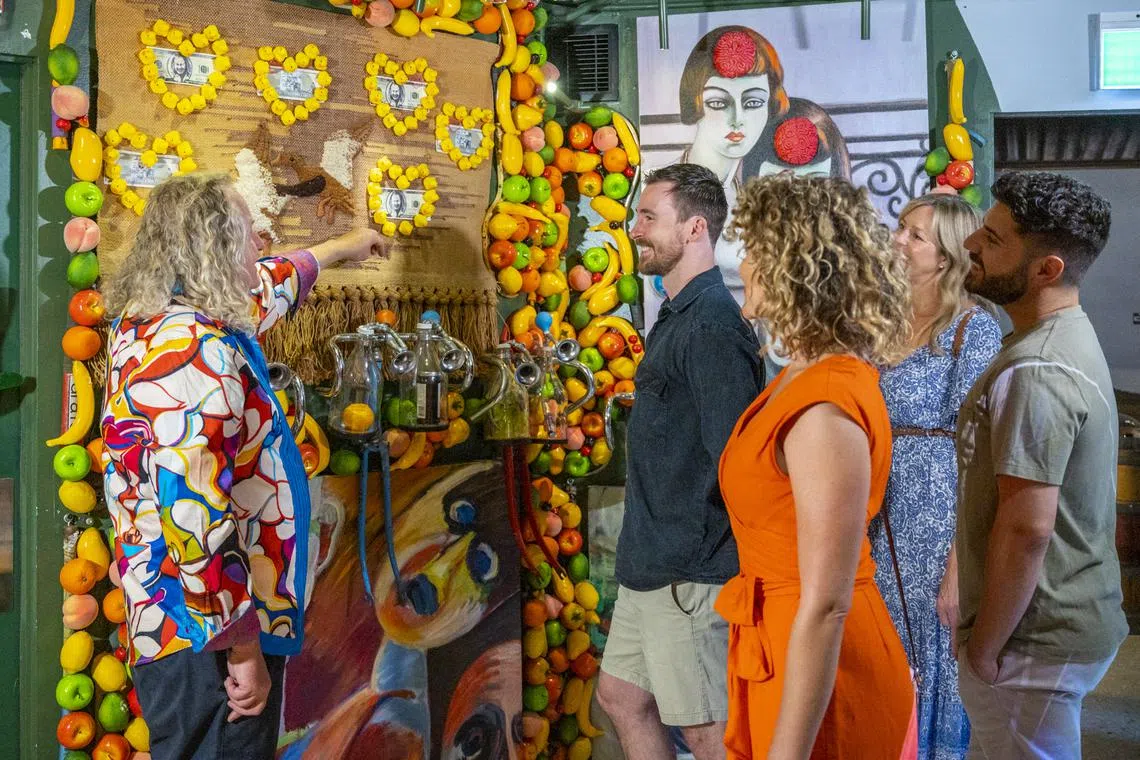
Fourth-generation winemaker Chester Osborn has turned his family estate into a surrealist playground with bizarre artwork and Salvador Dali sculptures.
PHOTO: D'ARENBERG
In the wine region of McLaren Vale, a 45-minute drive from the city, I meet the Willy Wonka of the wine world. The quirky and colourful Chester Osborn, 61, is a fourth-generation winemaker and artist at winery d’Arenberg ( darenberg.com.au
Marvelling at his design of the five-floor glass Rubik’s Cube floating above leafy vineyards, a landmark he likens to the Sydney Opera House of d’Arenberg, I feel inebriated already. Yet the exterior, flanked by two immense Salvador Dali sculptures, does not prepare me for what lies within.
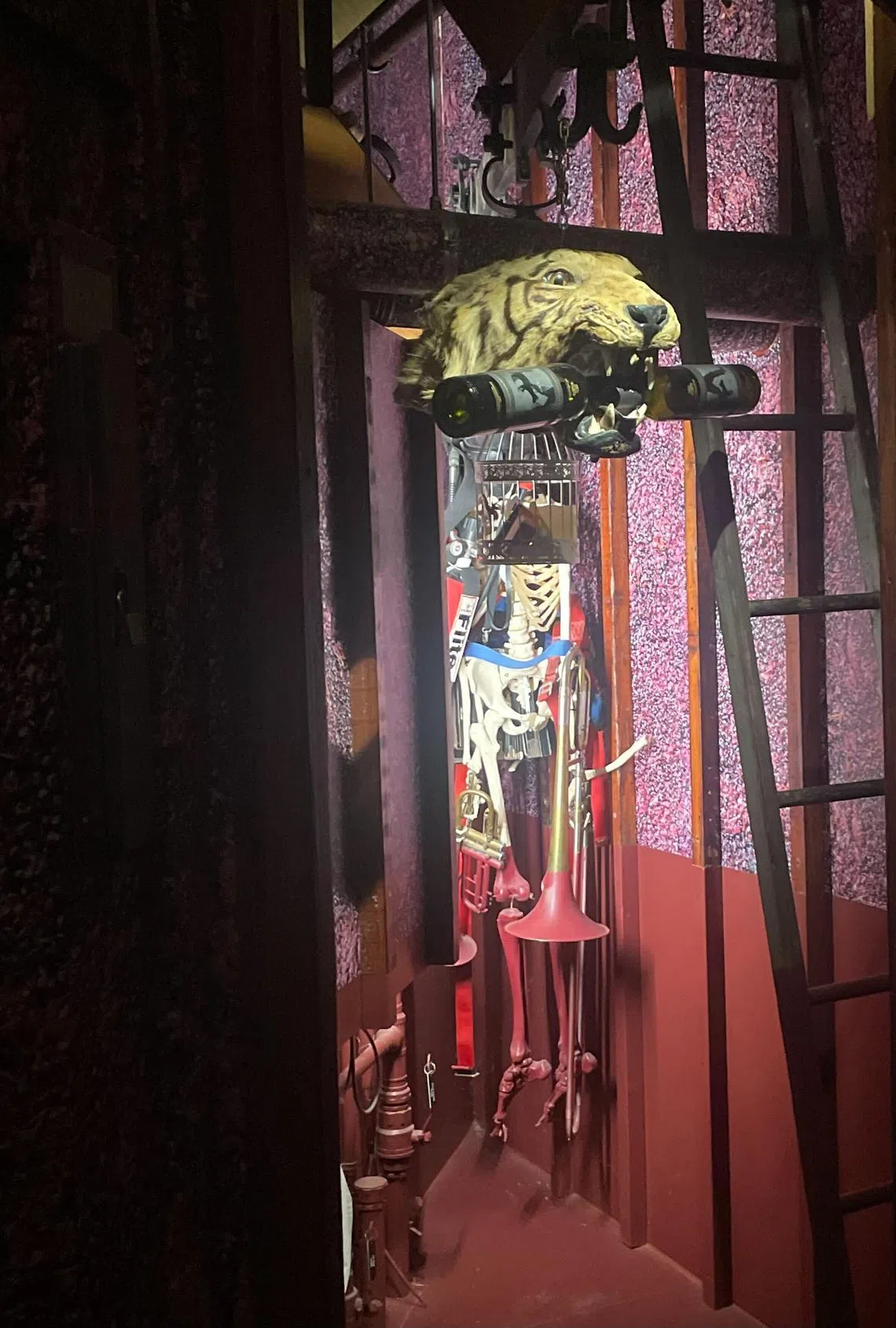
More than just a winery, d’Arenberg is a cellar door of curiosities with a realistic tiger’s head and a skeleton on display for humour and horror in good measure.
ST PHOTO: SHAWN HOO
Twenty-five of the Spanish surrealist genius’ bronze sculptures and other artworks are on show inside. And the Alternative Realities Museum displays a slew of curiosities – such as a skeleton model and a realistic tiger’s head which balances wine bottles precariously within its jaws – in a room meant to depict the risks and dangers of making great wine. Even the urinals in the gents are designed as caricatures with their mouths wide open and make for a risible experience.
An admission fee of A$30 (S$26) includes entry to these exhibitions and a wine tasting at the Tasting Room bar. Visitors can also play winemaker in a 75-minute experience at The Blending Bench (A$95 a person), where you can create a personalised Shiraz and take home a 750ml bottle of your creation.
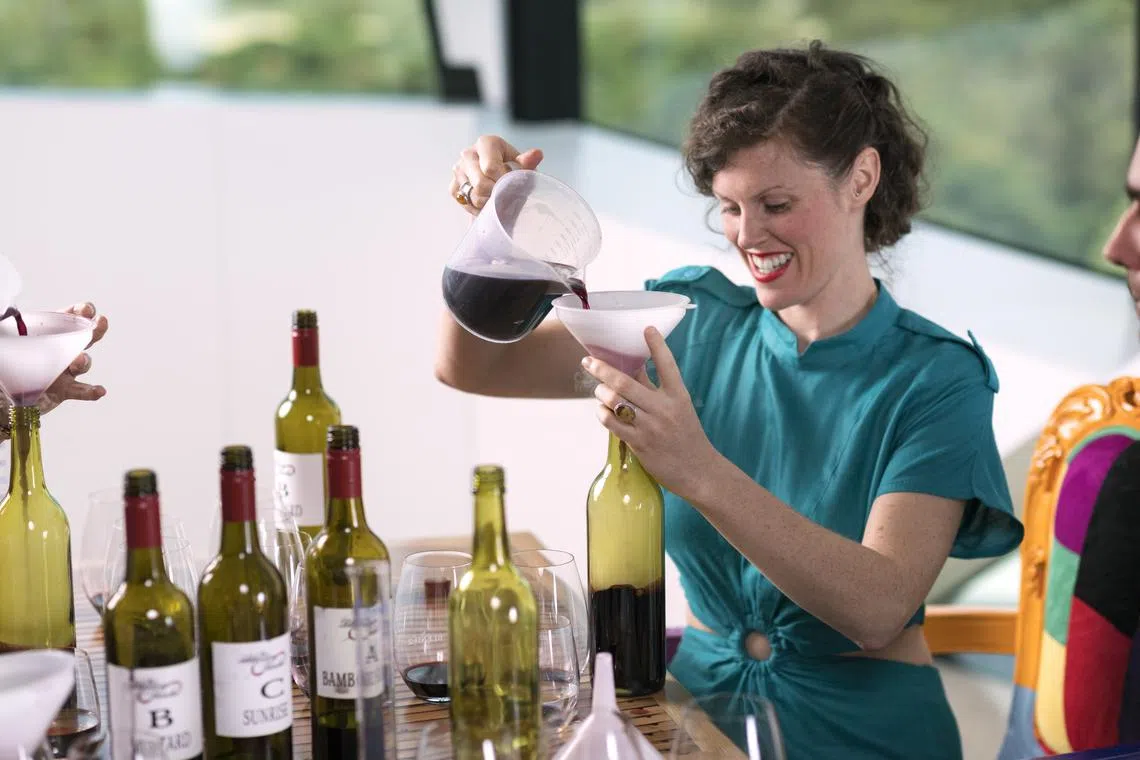
Play winemaker in d’Arenberg’s hands-on experience The Blending Bench, which allows you to create a personalised Shiraz and take home a 750ml bottle of your creation.
PHOTO: D'ARENBERG
I also check out the home of Penfolds ( www.penfolds.com/en-sg/home
There is an affordable daily tasting flight (A$20 a person, waived with any wine purchase) for walk-in guests, but I go for the luxurious “ultimate” flight (A$120). Each of the six wines tantalises my senses, and a glass of Penfolds’ Grange 2019 – with a recommended retail price of A$1,000 a bottle – is full-bodied decadence.
I take a tour of Penfolds, one of Australia’s oldest wineries. At A$35 a person, the hour-long journey through parts of the estate that date back to 1844, elevates my tasting experience by imbuing it with a deep sense of the winery’s history. For instance, my guide reveals that blind and deaf American author Helen Keller once visited Penfolds in 1948 and estimated the volume of a roughly 40,780-litre vat simply by feeling her way along the vat.
2. Visit the largest safari outside Africa
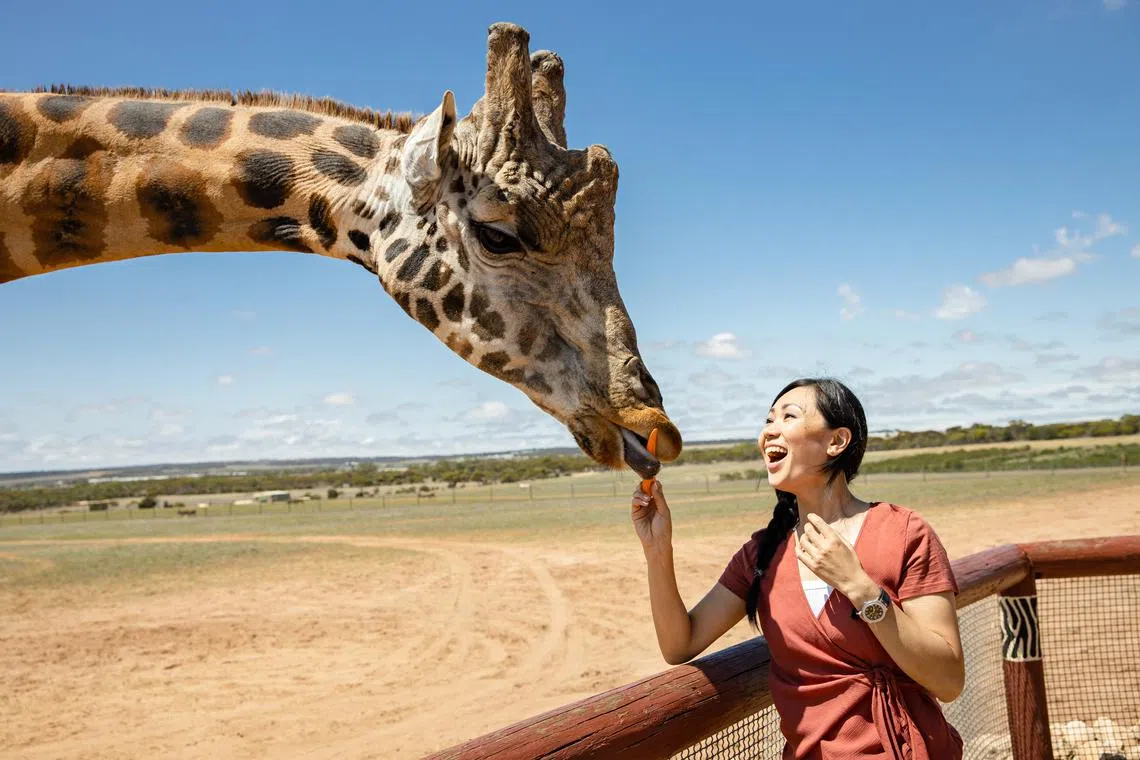
Hand-feed giraffes with carrots at Monarto Safari Park, touted as the largest safari park outside Africa.
PHOTO: MONARTO SAFARI PARK
As I proffer the apple in my hand to the critically endangered black rhinoceros behind metal railings at Monarto Safari Park ( monartosafari.com.au
Suspicious of my approach, Induna flinches and lowers its horn in defence – and both of us retreat slightly. At that moment, I understand viscerally how the biggest threat to black rhinos, of which there are fewer than 3,000 in the wild, is human poachers who covet the keratin in their horns.
I am at what is touted as the largest safari park outside Africa, home to more than 50 species of animals. My guides tell me that the animals I see are here because there is either a strong conservation or education purpose.
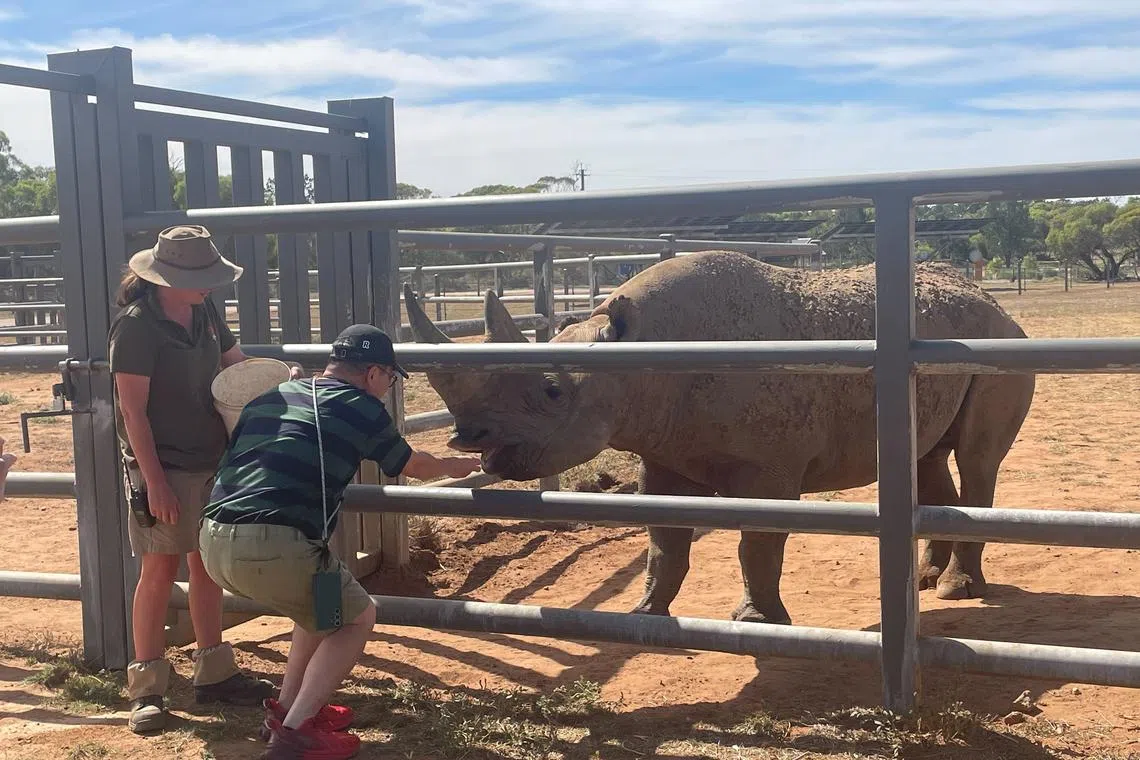
Get up close to and feed an endangered black rhinoceros at Monarto Safari Park.
ST PHOTO: SHAWN HOO
The Lions 360 experience, for example, adopts the “prey’s-eye view”, where visitors are in a cage, and the lions choose whether or not to approach. In other experiences, you can watch lemurs run around your feet or hand-feed carrots to the park’s magnificent giraffes.
At the end of 2024, the park will launch a 78-room Wild Africa Resort and 20 glamping tents. More details, including prices, will be released soon.
3. Shop for local produce
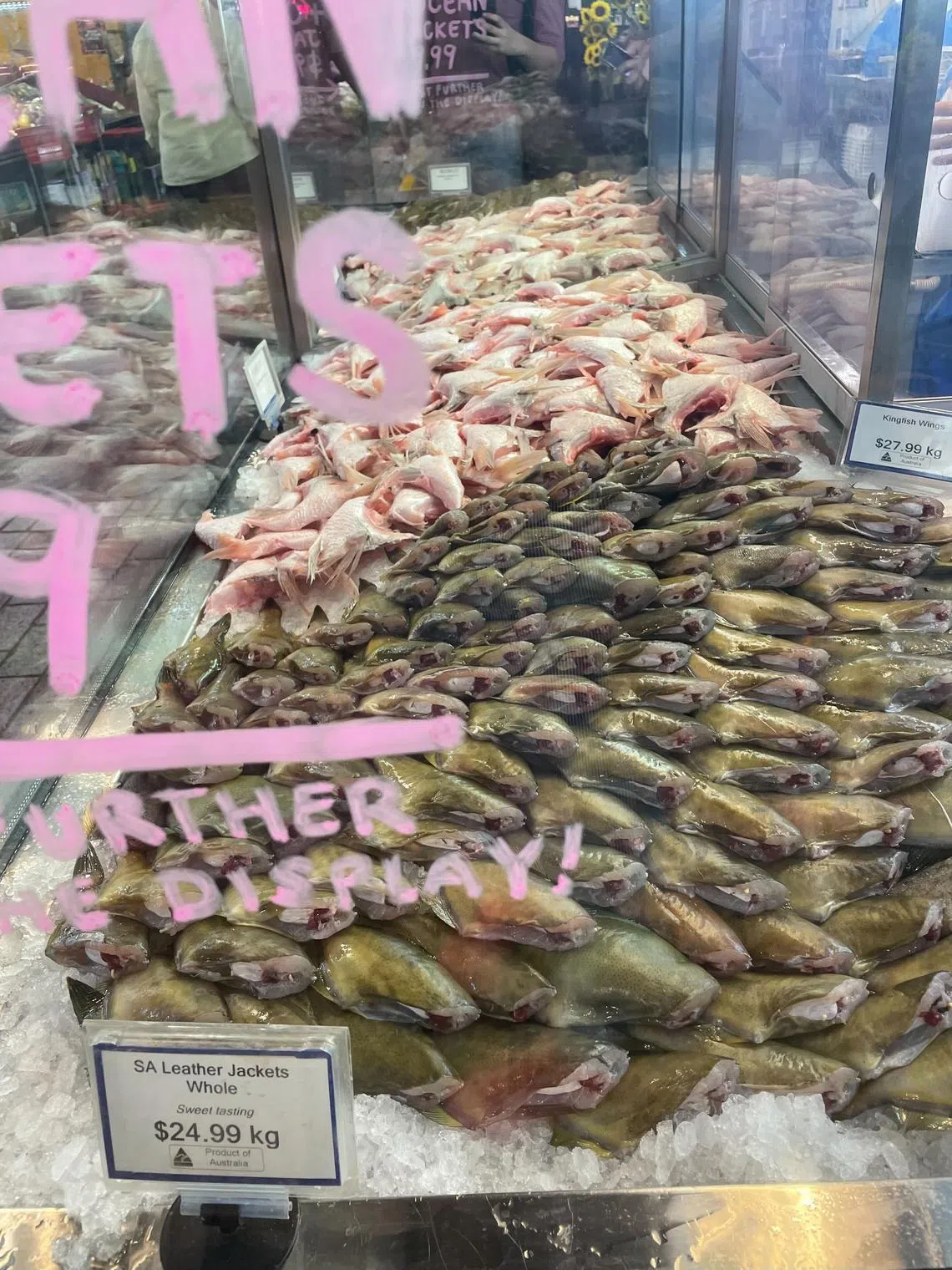
Adelaide Central Market serves fresh seafood, indigenous food and international cuisine.
ST PHOTO: SHAWN HOO
Adelaide is a foodie’s heaven and its Central Market ( adelaidecentralmarket.com.au
Check out the fluffy falafels at Real Falafel, rich and authentic Greek yogurt at YoYo Yoghurt & Smoothie Bar, and a range of local food and products at Something Wild, which bills itself as Australia’s first national indigenous native greens, game and conventional meat wholesaler.
On Sunday, when the Adelaide Central Market is closed, I make a trip to the Adelaide Farmers’ Market ( adelaidefarmersmarket.com.au
Beyond fresh produce, look out for natural skincare. I take a 90-minute behind-the-scenes tour of Australian skincare and cosmetics label Jurlique’s biodynamic farm in the Adelaide Hills ( str.sg/AKvC
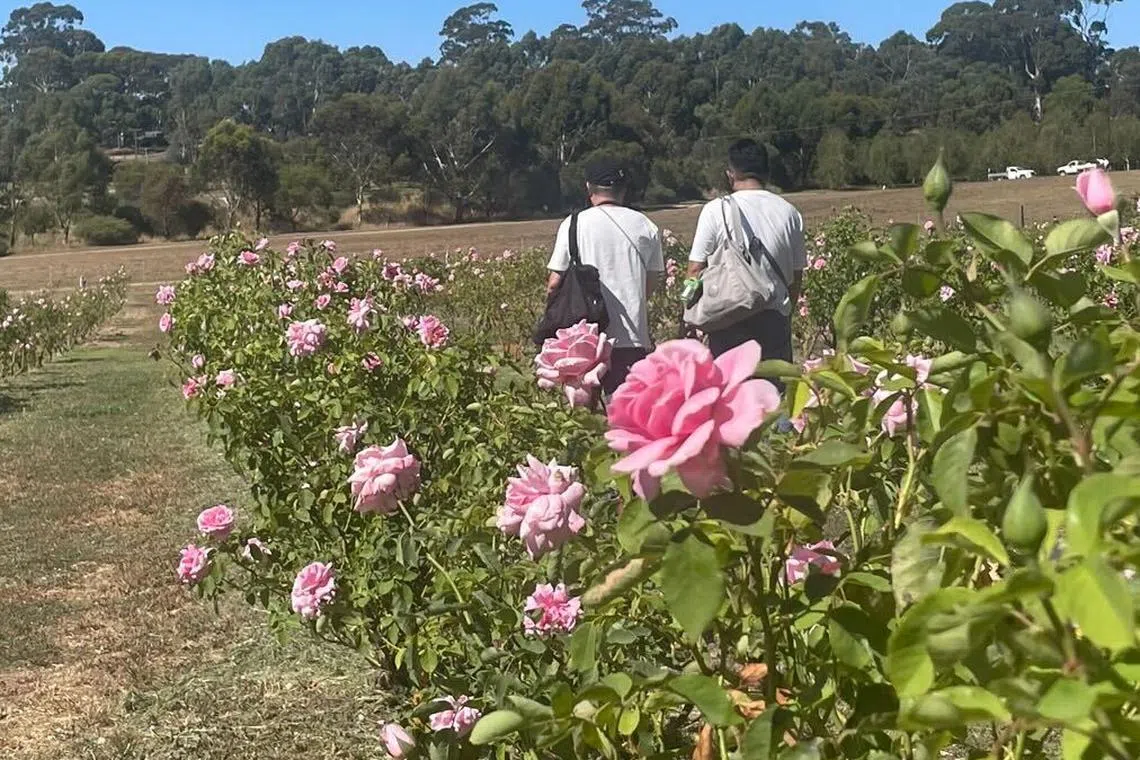
Take a 90-minute behind-the-scenes tour of natural skincare label Jurlique's biodynamic farm in the Adelaide hills and learn about the hybrid Jurlique rose.
ST PHOTO: SHAWN HOO
4. Get cultured on North Terrace
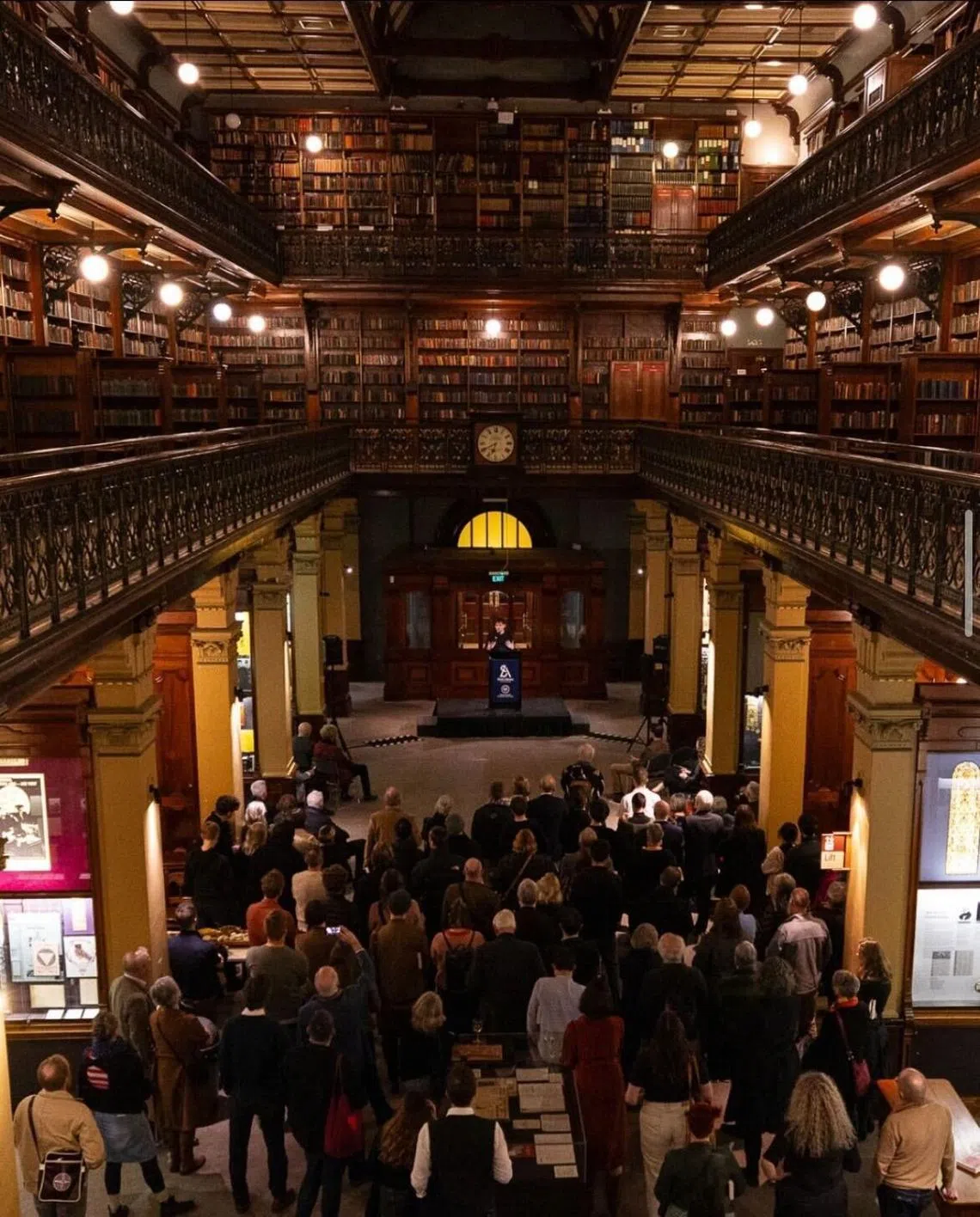
The Mortlock Wing in the State Library of South Australia is often compared to the library in fictional wizarding school Hogwarts in the acclaimed book and film series Harry Potter.
PHOTO: STATELIBRARYSA/INSTAGRAM
While Melbourne is known as Australia’s arts and culture capital, Adelaide’s North Terrace surprises me with its cultural offerings.
I step into the Art Gallery of South Australia ( www.agsa.sa.gov.au
In another wing, Australian, European and Asian art are juxtaposed in surprising ways. Do not miss big names such as master sculptor Auguste Rodin, a site-specific installation by Japanese artist Chiharu Shiota and Australian artist Hans Heysen’s depictions of Adelaide’s landscapes.
Harry Potter fans will find an Instagram opportunity at the Mortlock Wing in the State Library of South Australia ( slsa.sa.gov.au/home
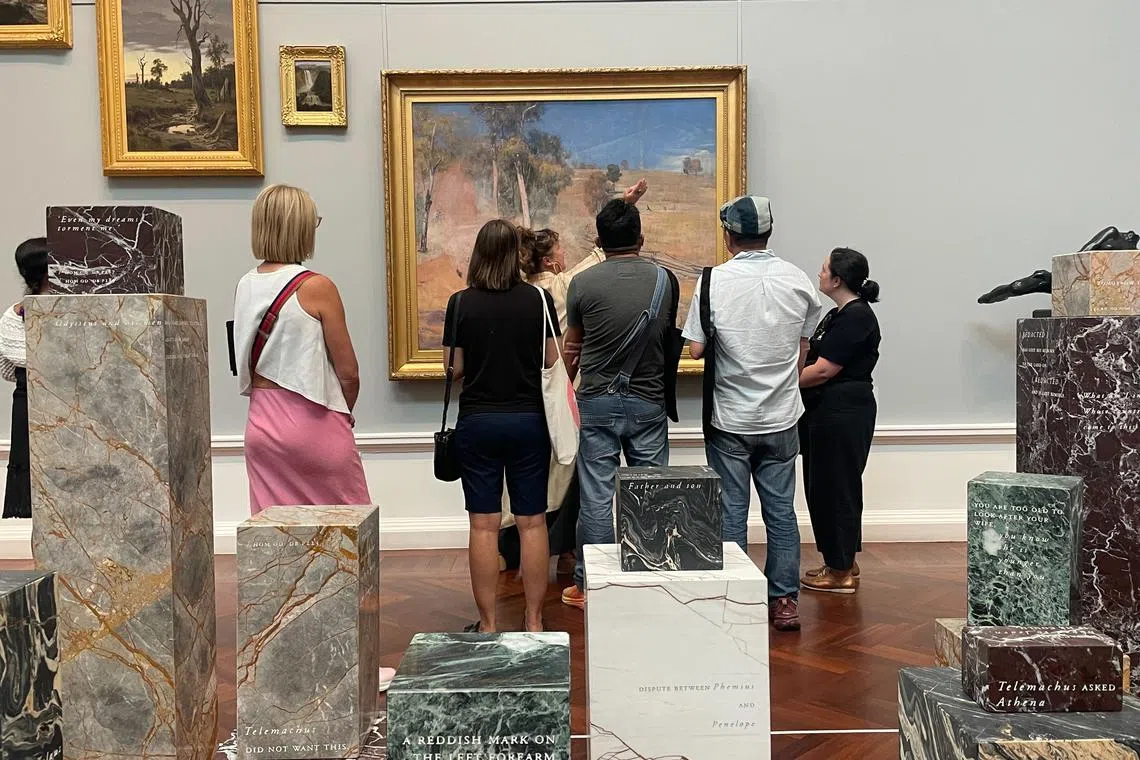
The Art Gallery of South Australia features major Australian, European and Asian artists, including Auguste Rodin, Chiharu Shiota and Hans Heysen.
ST PHOTO: SHAWN HOO
The South Australian Museum ( www.samuseum.sa.gov.au
General admission to the museums and state library is free, excluding special exhibitions.
5. Party in Australia’s festival capital
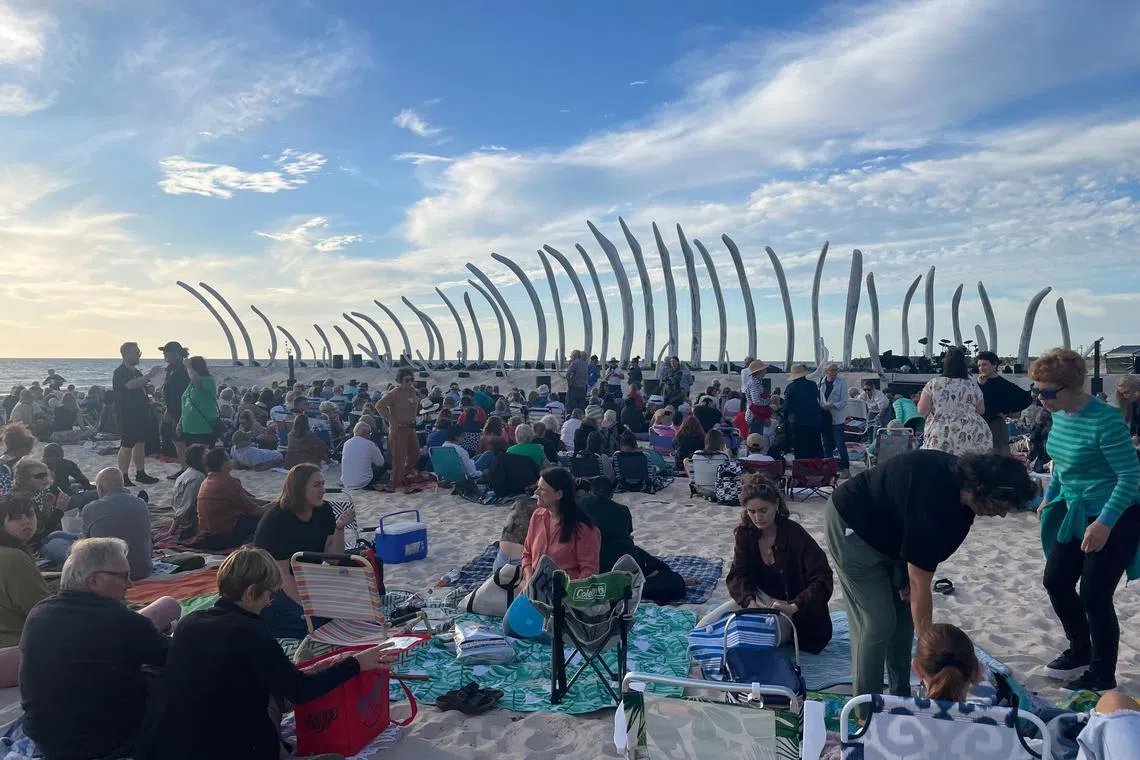
Baleen Moondjan, the opening show of the Adelaide Festival, took place in March on the fine sand of Glenelg Beach.
ST PHOTO: SHAWN HOO
I am here during what locals colloquially term “Mad March” and find myself at no fewer than three festivals.
Adelaide, with its varied landscape, is a natural stage for more than a dozen festivals it hosts year-round, and planning your trip around a festival of interest ( festivalcityadelaide.com.au/festivals
On the fine sand of Glenelg Beach, I witness a spectacular dance celebration of First Nations’ relationship with whales in an outdoor amphitheatre, framed by larger-than-life bones at the opening of Adelaide Festival. At Rundle Park, I am entertained by a mix of sensuous cabaret and acrobatics as part of Adelaide Fringe.
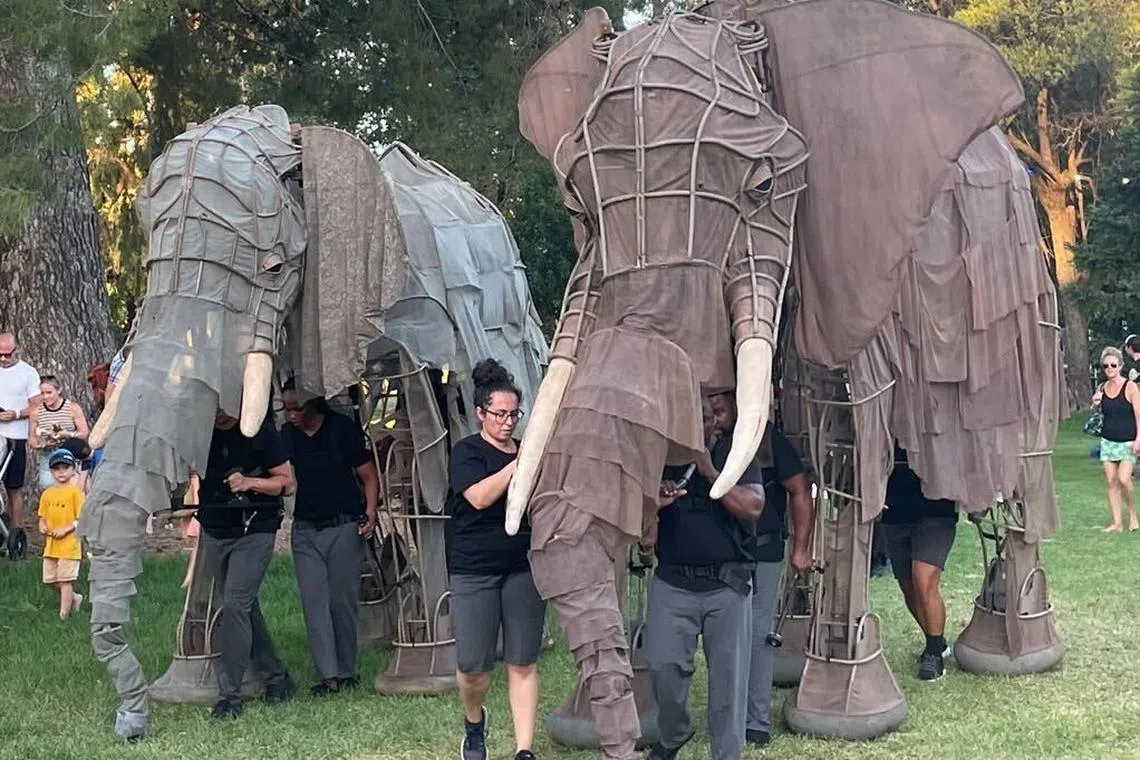
A family of life-size elephant puppets by South Africa’s Handspring Puppet Company delighted audiences at the WOMADelaide in March.
ST PHOTO: SHAWN HOO
Global music, arts and dance festival WOMADelaide transforms the Botanic Park into an outdoor concert with multiple venues, with this year’s headliner being English singer Corinne Bailey Rae of Put Your Records On (2006) fame.
Other festivals throughout the year include Illuminate Adelaide (June to August), which lights up long winter nights, and Tarnanthi Festival (October to January), which celebrates Australia’s First Nations cultures in spring.
Travel tips
Buses, trains and trams in the city can be accessed for free in some areas and with a metroCard (A$5) in others. For details, go to str.sg/Fju6
For those venturing beyond the city, travelling by car is highly recommended. Car-rental companies are located on the ground floor of Adelaide Airport. A five-seater Toyota Corolla Hatch from Avis costs me A$246 for a day’s rental.
To explore wine country without having to designate a driver, consider a private driver from Door To Door Chauffeurs ( doortodoor.net.au
Try out Asian restaurants with an Australian twist. Daughter In Law ( str.sg/eQHg
I also try Kiin Restaurant ( kiinrestaurant.com.au
Where to stay
Sequoia Lodge ( str.sg/b9V4;
The more affordable Mount Lofty House ( mtloftyhouse.com.au;
A good base in the city is Vibe Hotel ( str.sg/nAhZ
In the mornings, I take a three-minute walk from the hotel to second-hand bookstore New Morning Books and find some of the best books on Australia, such as novels by the Nobel Prize-winning Australian writer Patrick White, whose books are rare in Singapore.
Prices are based on checks by ST in March.
The writer’s trip was hosted by South Australian Tourism Commission.

